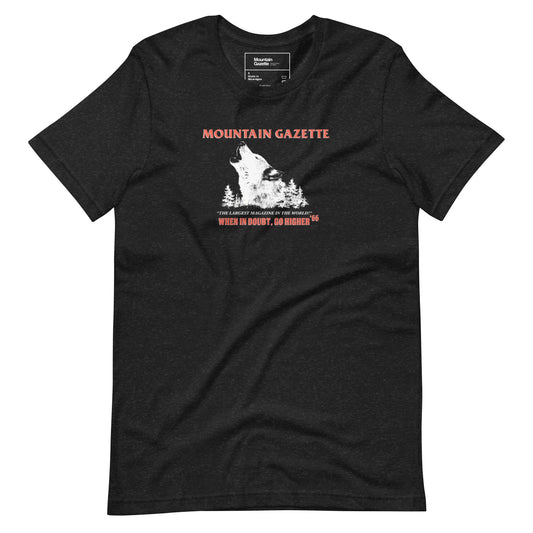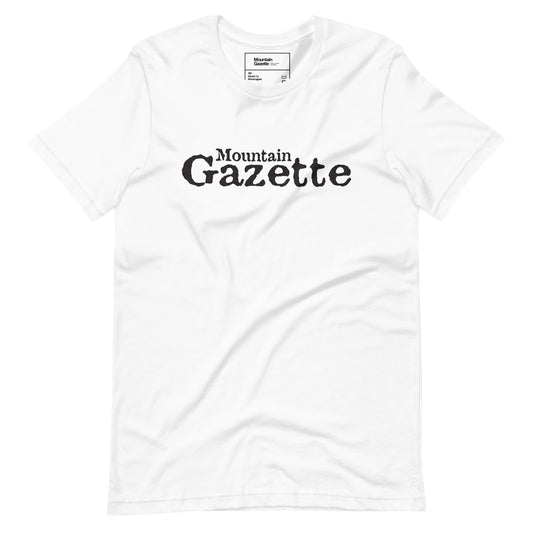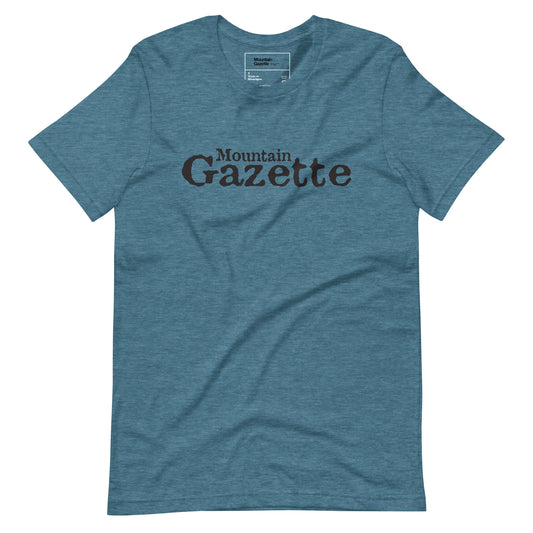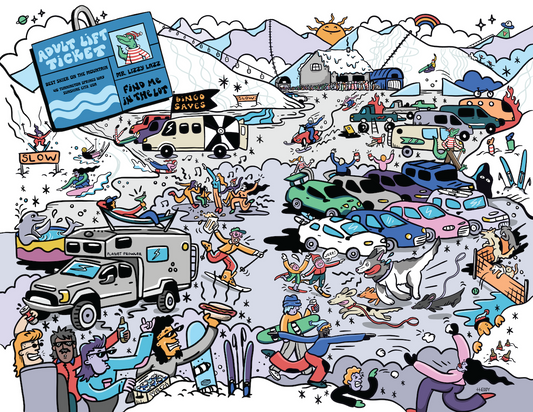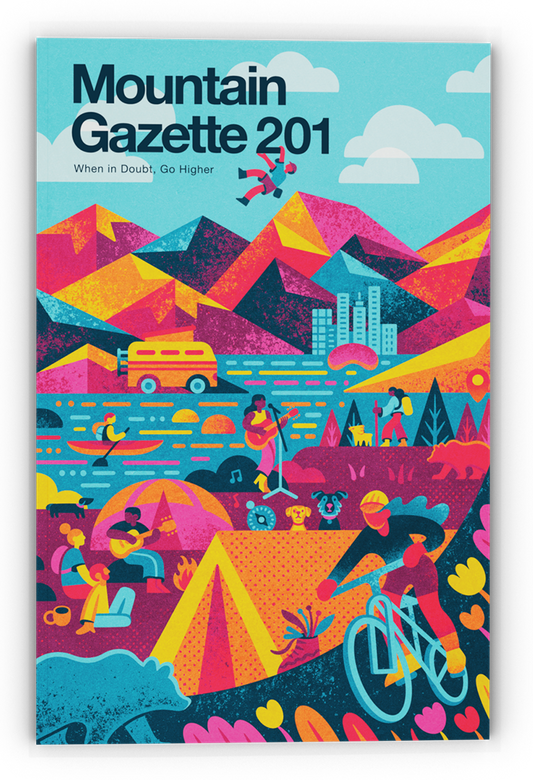This article was originally published in the Here & There newsletter by Kyle Frost. Here & There is now Mountain Gazette's weekly Thursday newsletter.
A few years ago, after leaving the UK for the first time, I spent a month traveling around the Alps while trail running and working remotely. My travels took me to Bad Gastein, a village in central Austria. This Austrian spa town (“Bad” means “spa”) sits nestled in a valley of the High Tauern mountains, and is known for its thermal baths, unique architmoecture, and skiing in the winter. I stayed at Selina Bad Gastein for a week, a global lifestyle hotel brand that had a focus on “digital nomad” and younger travelers – I utilized their coworking facilities during the day and explored the surrounding trails in the mornings and evenings. It was a reasonably pleasant experience, if a bit of an odd vibe.
A few weeks ago, Selina effectively ceded control of the company’s affairs, business, and property to administrators. The company faces insolvency after failing to pay interest on a half-million dollar interest payment to a unit of the Inter-American Development Bank. They previously raised over $500 million dollars to fund their millennial focused hotels. The precipitous collapse raises interesting questions about travel trends and the future of digital nomadism and remote work.
How we got here
Selina is a well-known hotel/hostel brand — they got their start in Central and South America, but over the years made inroads elsewhere, opening locations in Portugal, Greece, Israel, the UK, Austria, the United States, and Australia. The brand positioned itself at the intersection of travel and work; most of their properties have dedicated co-working spaces included or available for an additional fee. Naturally, this was an attraction for me as a solo traveler also working full time. They grew to over 100 hotel/hostel properties at their peak, following a tried and true model of adapting older, underserved properties and flipping them into “hip” destinations that attract younger travelers (I’ve previously written about how to flip a hip, outdoorsy motel).
Selina rode the growth of digital nomads and increased travel + tourism, raising millions upon millions of dollars, despite concerns about finances. They were billed by Forbes as the “Digital Nomad Hotel of the Future”. They acquired remote work and travel company Remote Year in 2020 (a soft landing due to COVID related struggles), attributing the acquisition as part of a plan to “double down on its stay, play and ‘work from anywhere’ model”. They eventually went public as a special purpose acquisition company, or SPAC, in 2022, raising $1.2 billion in the process.
Problems in paradise
Selina never owned the vast majority of its properties, but it consistently lost money on operating costs. It also invested heavily in technology, developing its own booking platform, app, and membership model. They tried to take a “tech” growth approach to an old and well understood industry, real estate and hospitality, an industry that is more traditionally known for conservative, measured growth. Their target consumer base of young, digital friendly, long-term stay travelers couldn’t fill the beds – their occupancy rate hovered around 35% (a good hotel occupancy rate is usually 60-70%+). Much like WeWork (who’s founder Adam Neuman was also an investor in Selina) losses spiraled out of control and no amount of “tech” innovations could combat that.
Travelers want consistency in accommodation
We’ve seen a shift from short-term rentals back towards traditional hotels in many places. Inconsistent pricing, experience, and unreliable experiences mean that many travelers are returning the security of a traditional hotel over the flexibility of Airbnb. And, while Selina wasn’t an STR company, not only were they offering an inconsistent experience, but it was often *more* expensive than other local lodging options (both short and long term). There’s no doubt that the growth of Airbnb and other unique offerings (like Selina) has forced hotels to up their game. But, they’re catching up. Many now integrate excellent working areas (goodbye to the depressing “business centers”), and as an added bonus, you don’t have to take the trash out, or do the laundry as a “check out” task.
The property I stayed at in Bad Gastein was an interesting example – it’s an old, legacy hotel that had lost much of its charm and luster over the years. Some of that was apparent in the quirkiness of the property and rooms, and the overall “quality” of the space. The “co-working space” was just a converted dining/ballroom with some mismatched furniture scattered about. Fine for my purposes, but by no means ‘purpose-built’.
Additionally, ski towns in the alps can be quiet in the summer — many restaurants and hotels are closed for the season. Fewer lodging options means a wide range of ages and travel styles at the options that are available. This normally would be fine, but it was clear that Selina wanted to curate a *particular* vibe. They hosted an electronic music “festival” over the weekend and tried to attract young, hip people from Salzburg (about an hour away by train). As a 30-something professional who has migrated away from late-night party traveling and towards chill drinks and going to bed early, I almost felt like I was too old/boring to be in Selina’s target audience, and many of the families staying at the property clearly weren’t enthused about the type of hotel they had booked.
Does this have implications for the state of the “digital nomad” space?
When I started digging into this story, I initially thought that it might be an interesting bellwether for the state of travel and digital nomadism. However, now knowing the details, I’m less sure. I wouldn’t say that this has any particular direct correlation with the state of the digital nomad space. The Selina situation reeks of mismanagement and a lack of cohesive vision.
But, I’m still seeing some contradictory trends emerging with regard to remote work, travel, and “digital nomads. My perspective has long been that most people aren’t cut out to be true “digital nomads” and that we’d see a leveling off or decline of the trend. Also, some millennials (which make up a majority of digital nomads) are getting older and finally choosing to settle down. There’s also an increasing trend towards “back to the office” policies for many companies, who either want people nearby or in-office. “There has been a significant decrease in remote job openings over the last six months of more than 20 percent,” said Evan Sohn, the CEO of Aura, a workforce insights platform (SHRM). Even Patagonia recently moved to a hybrid model after previously promising employees they’d be able to work remotely. They gave some staff 3 days to decide whether they’d relocate or quit.
On the other hand, a tough job market, inflation, and increased inaccessibility of housing prices has affected the other direction as well. Why waste thousands of dollars a month in high rent areas when you could (hopefully) find remote work and spend less money? If you don’t feel like you’ll ever be able to afford a house and put down roots, why bother? Why spend all your income on rent and never be able to travel, when you could just live somewhere more interesting or pursue a more nomadic lifestyle? The younger you are, the more likely they are to want to work from wherever they want. 58% of digital nomads are in either Gen Z (21%) or millennials (37%). And 59% of digital nomads say they plan to continue their lifestyle (Forbes).
Overall, it’s an interesting microcosm of companies identifying a burgeoning trend, finding some success, riding that trend, and then dramatically overextending themselves. And while it may not be the canary in the coal mine that I thought it might be, it’s still a great cautionary tale for travel businesses about the dangers of tying themselves too tightly to a particular trend (and failing to adapt or provide a consistent level of experience).




